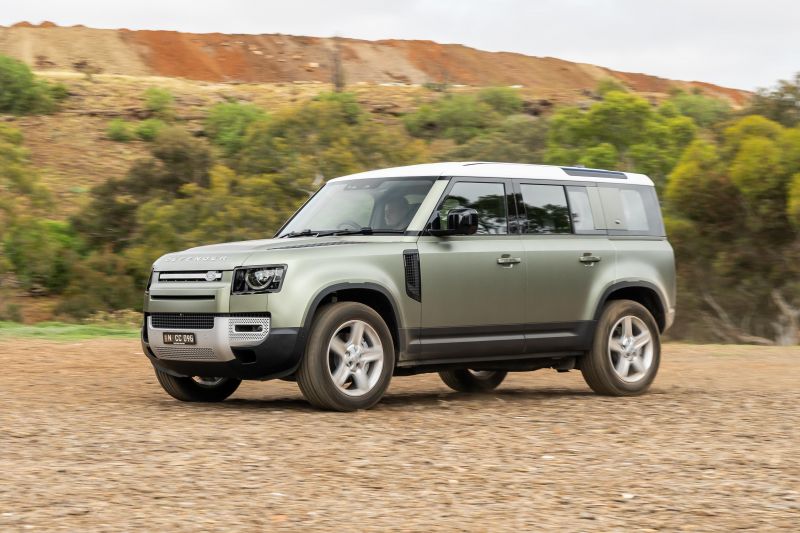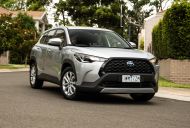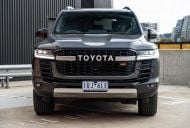Jaguar Land Rover has started its recovery with a new CEO, a new strategic plan, and improving financial results.
The Indian-owned British automaker recorded pre-tax profits of £662 million (A$1.2 billion) for the fiscal year ending March 31, 2021.
That’s largely on the back of a strong fourth-quarter performance, where JLR recorded pre-tax profits of £534 million (A$972 million).
There’s a big ‘but’ here, and it comes in the form of previously-announced ‘exceptional charges’, to the tune of £1.5 billion in the fourth quarter.
These dragged JLR to an overall pre-tax loss of £952 million (A$1.73 billion) for the quarter and £861 million (A$1.56 billion) for the full year.
These exceptional charges include non-cash write-downs of prior investments (£952 million/A$1.73 billion) plus restructuring charges (£534 million/A$972 million)
Retail sales grew 12.4 per cent in the fourth quarter compared to the same time last year, with Chinese sales up 127 per cent – that’s tempered, though, by the fact China was in the throes of COVID-19 at that time last year.
JLR says the Land Rover Defender is off to a good start, with 45,244 units sold in the full year. In the fourth quarter alone, JLR sold 16,963 of them.
Overall, sales for the full year were down 13.6 per cent to 439,588 vehicles, though Chinese sales were up 23.4 per cent compared to the previous year.
Earnings before interest and taxes (EBIT) improved 2.5 per cent year-on-year and 10.7 per cent in the fourth quarter to 2.6 and 7.5 per cent, respectively.
The company is aiming to deliver double-digit EBIT margins by the 2025/26 fiscal year.
It expects its EBIT margin to be at least 4.0 per cent this fiscal year and its cash flow to break even, and it has already accrued £2.5 billion (A$4.55 billion) of investment and £0.5 billion (A$911 million) of restructuring costs for the new fiscal year.
Cost-cutting yielded savings of £2.5 billion (A$4.55 billion) in the 2020/21 fiscal year, bringing the running total to £6 billion (A$10.93 billion) since the Charge+ cost efficiencies plan was launched in September 2018.
Overall, the company ended the fiscal year with cash and short-term investments of £4.8 billion (A$8.7 billion), total liquidity of £6.7 billion (A$12.2 billion), and an undrawn revolving credit facility of £1.9 billion (A$3.46 billion).
Though sales are improving as the pandemic gradually eases, a new threat to the company is the shortage of semi-conductors.
This shortage has already affected production plans for the first quarter of the current fiscal year.
It was Thierry Bolloré’s first full fiscal year as JLR CEO, and during his tenure he has announced sweeping changes – referred to as Reimagine – to the company.
That includes axing a glut of planned products, even ones far along in the development stage.
The next-generation Jaguar XJ was left on the cutting room floor, as was a flagship Jaguar SUV expected to wear the J-Pace nameplate and an all-electric Land Rover referred to by some as the Road Rover.
All of these models were to use the MLA platform underpinning the next-generation Range Rover and Range Rover Sport.
Instead of attempting to tackle the Germans head-on with a sprawling line-up of vehicles, Jaguar is being refocused as a more exclusive, all-electric brand that’ll use an as-yet unspecified electric vehicle platform and feature a much smaller model range.
“Our strategy is ambitious, and it will make us more agile, efficient and sustainable. Although it is still early days, we have made significant progress in implementing it,” said CEO Thierry Bolloré.
“This has reaffirmed my confidence that we have the right strategy, the right people and the right product-plans to deliver against our targets.”
The fiscal year ending March 31, 2020 saw JLR post a full-year, pre-tax loss of £422 million (A$768 million).
The pre-tax loss for the fourth quarter was £501 million (A$912 million) on revenues of £5.4 billion.








